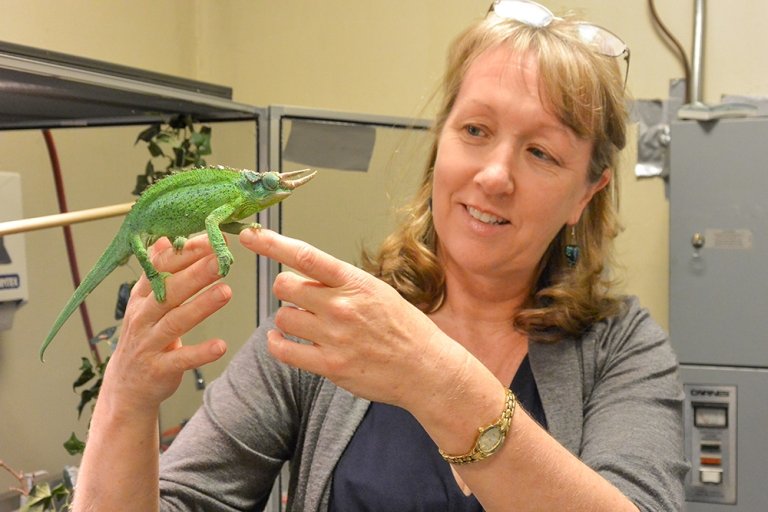Ready for Science?
For 12 years, first-year students have been getting ready for their undergraduate career with an intensive, week-long summer program

By Tom Johnson
Newly minted high school graduates about to enter the often-confounding world of college have to start their acclimation process somewhere. For incoming first-year students with an interest in science, there is perhaps no better place to “kick the tires” of their new schools than the Summer Science Immersion Program (SScIP), which is held the week before classes commence under the auspices of the Department of Natural Sciences of Pitzer and Scripps Colleges.
The week-long program, directed for more than a decade by Marion Preest, who is Pritzker Family Foundation Professor of Biology, includes activities such as collecting and analyzing data from Bernard Field Station, attending lectures at Cal State Los Angeles, exploring Griffith Observatory, and working in the department’s labs.
“The program is primarily for students from underrepresented groups in science, first-generation students, and students from under-resourced high schools,” Preest said. “The students spend quite a bit of time in a chemistry lab. We get them up to the Robert J. Bernard Biological Field Station to collect water samples from the lake out there. They come back and look at the critters in the water under microscopes in the biology lab.
“The whole idea of the program is to get students comfortable with being college students,” she continued, “interacting with faculty and staff, navigating their way around a science lab, and knowing that it’s OK if you drop a beaker, it’s not the end of the world!”
The program was started in 2013 via a large grant from the Howard Hughes Medical Institute, which included an award of $3.6 million to the five Claremont Colleges to prepare undergraduates for careers in science and medicine. According to Preest, David Hansen, the department’s former dean, directed the program at the outset before she “swanned in” and took over the reins.
“Many of the elements that were in the program the first year are still around, but we have tweaked it here and there so it’s not a carbon copy of what existed in year one,” she explained, stressing that the ideal summer program size is about 30, which affords everyone “a comfort zone” of quality time in which to interact with faculty, program mentors, and each other.
Last summer, physics was integrated into the program for the first time, and Preest said she might mix things up a bit next year with a field trip to the Natural History Museum of Los Angeles County (which happens to be directed by former Scripps president Lori Bettison-Varga).
“We also have workshops led by various staff and faculty,” Preest said. “Patrick Sharp, who is chair of the Cal State Los Angeles Department of Liberal Studies, participates every year with research on representation of gender and race in science fiction. The students love his workshop.”
Each year, the summer immersion program engages six alumni of the program to assist students as peer mentors, which, in Preest’s view, is critical to the program’s success. Sarai Ortega, a CMC alumna who participated in the program in 2019, served as a peer mentor and developed a workshop, “The Science of Learning.”
“SScIP was a highlight of my college experience,” said Ortega. “I was able to connect with students from CMC, Scripps, and Pitzer before most students were even on campus. We were able to meet science faculty and take introductory classes in biology and chemistry to ease us into the curriculum. By the end of the week, I had friends I could rely on throughout my next four years. Many of us would study together for our science courses, knowing we were experiencing similar feelings of imposter syndrome and anxiety around succeeding in these classes. The summer program provides students with a huge network willing to help at any point, even post-graduation.”
For the past year, Ortega has been living in Huehuetenango, Guatemala, working as a Fulbright English teaching assistant and has just been accepted to medical school.
“It feels surreal to start medical school next year, knowing how nervous I felt about starting the pre-med journey my freshman year,” she said. “I am endlessly grateful to my SScIP community for the support they gave me. I truly would not be in this position without them!”